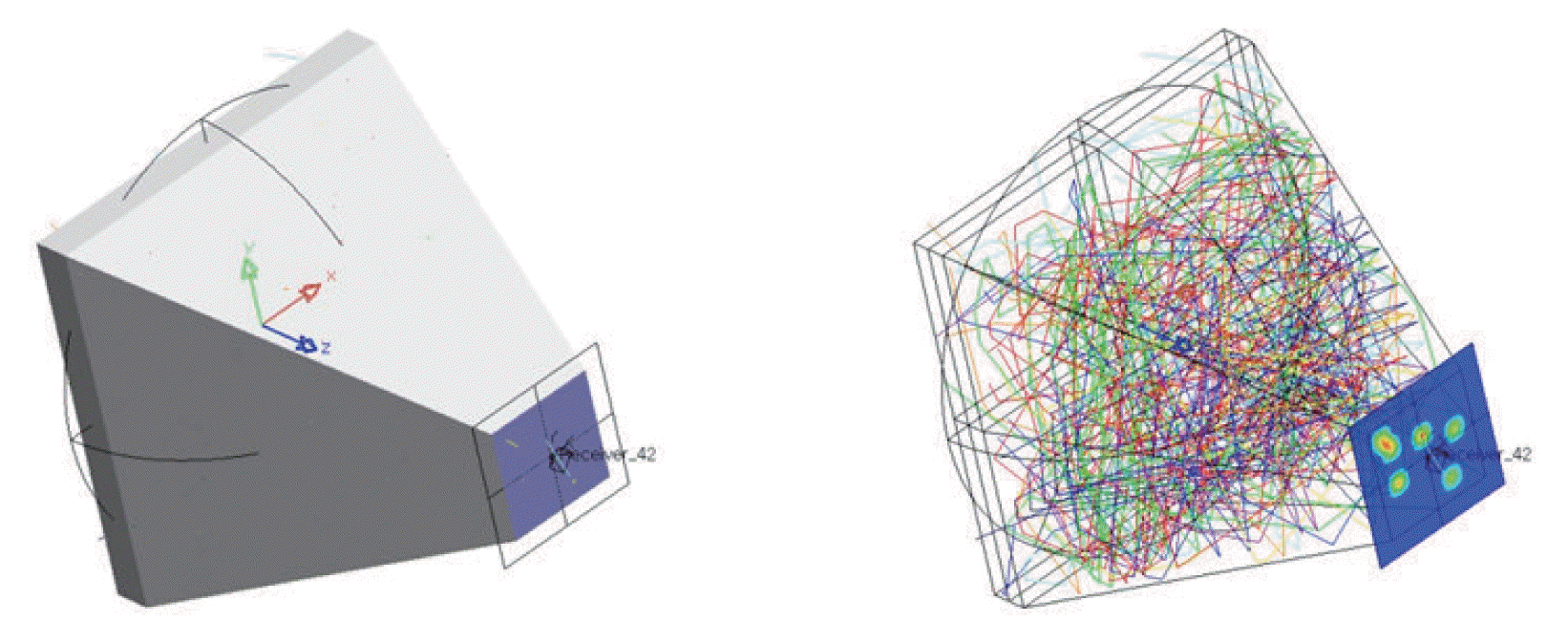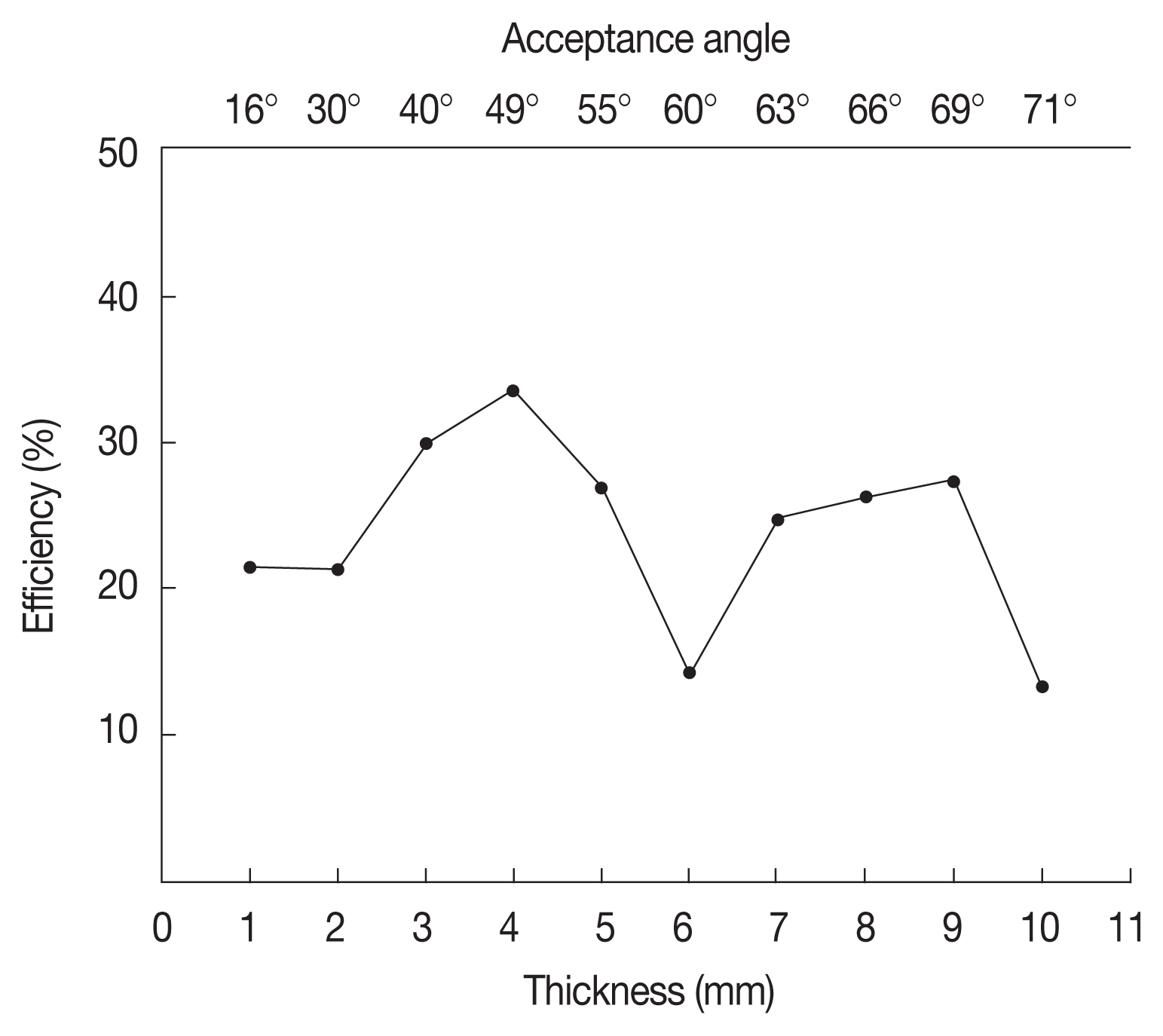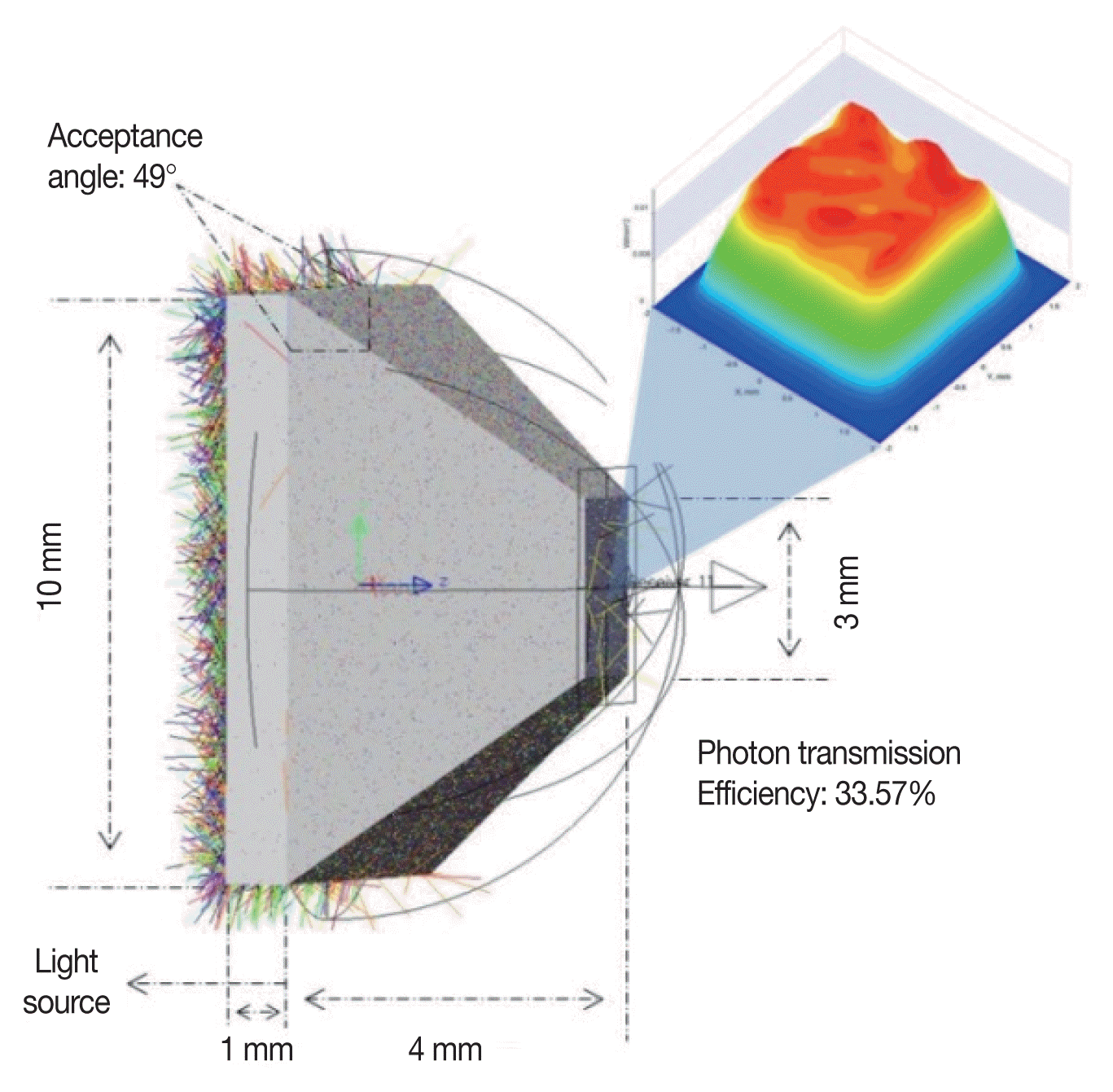Introduction
A scintillation detector is a device that measures the energy and quantity of radiation emitted from radioactive material. It is used in a wide range of fields including nuclear medicine and astrophysics. A typical scintillation detector consists of a scintillator, a light sensor, and a signal processing circuit. Although a vacuum based photomultiplier tube (PMT) is typically used as a light sensor, it has many problems such as high operating voltage, sensitivity to magnetic fields, and large volume. These problems have prompted research regarding silicon based light sensors.
However, newly developed silicon-based light sensors that fix the weaknesses of existing PMTs require the use of comparatively smaller scintillations due to the smaller light-receiving area. This restriction causes a decrease in the radiation detection efficiency [1].
The problem can be resolved by utilizing a light guide between the scintillation and the light sensor, thereby directing the scintillation of a large area to a light receiving unit of a small area within the light sensor. However, because factors such as the material, thickness, and angle of the internal reflection of the light guide have a significant effect on the delivery of the scintillation, this research designed and evaluated the photo transmission efficiency of a light guide by using the LightTools software tool (Synopsys Co., Ossining, NY), which allows for the tracking and design of light [3].
LightTools is an optical design and analysis program that utilizes Monte Carlo simulation of geometric ray tracing to allow analysis of the propagation and images of light resulting from optical devices, such as the light source, reflector, and lens.
LightTools Modeling
Figure 1 depicts the scintillation detector with the light guide placed on a silicon PMT, which is a silicon-based light sensor. The scintillation and light guide in the picture is a LYSO (Epic Crystal Co., Shanghai, CN) and a BK-7optical glass (Sipat Co., Chongqing, CN). The light sensor is a silicon photomultiplier (S12572-100C model, Hamamatsu Photonics Co., Hamaatsu, JP). As shown in the figure, the scintillation detector consists of a scintillation, light guide, and light sensor, along with a 10×10×20 mm3 square LYSO scintillation. Because a light guide must be used to emit light from the scintillation to the 3×3 mm2 light receiving unit within the light sensor, optimization of the light guide design is necessary.
Figure 2 depicts the LightTools modeling of the light guide.
The light guide in the design was modeled on SCHOTT’s N-BK 7 Optical glass. N-BK7 has a refractive index of n=1.528 with 420 nm wavelengths as the standard and a transmissivity of 0.986 at a thickness of 5 mm (Figure 3) (Schott optical glass data sheets. http://refractiveindex.info/).
The light guide was in tapered form with a reception area of 10 mm×10 mm and an area of exit of 3 mm×3 mm, which is joined with the light sensor’s window. Furthermore, in order to evaluate the photon transmission efficiency of the light guide for different thicknesses, the thickness was modified to a thickness between 1–10 mm with 1 mm increments. Figure 4 depicts the N-BK 7 light guides designed for each of the thicknesses. The characteristics of the emitting light source of the LYSO scintillation were taken into consideration for the design of the light source (Table 1) (Epic scintillator data sheets. http://www.epic-crystal.com/wp-content/uploads/2015/10/EPIC-LYSOCe-Scintillator.pdf).
Because the light pattern does not show the specific direction of the light spread, the ideal light spread of the Lambertian pattern was used. The light source had an operating parameter with an average wavelength of 420 nm, a half value width of 60 nm, and a standard deviation of 25.48 nm, making it a Gaussian spectrum [6]. The number of photons is the same as the LYSO light yield of 30,000, and for the reflector of the light guide, a total reflection mirror with a 100% reflection percentage for 420 nm waves was used to eliminate the errors/losses during the reflections. The parameters such as the emission spectrum and the reflection percentage can be modified within the code to suit the design conditions.
Photon Transmission Efficiency of the Light Guide
The photon transmission efficiency was evaluated for each of the thicknesses using the LightTools code by ray tracing the light path within the light guide and then analyzing the irradiance using the receiver located on the light guide’s emission surface [3]. The irradiance is the density of the flux received per unit of area and is expressed by W m−2. The photon transmission efficiency calculated from the computer simulations for each of the light guide thicknesses and the acceptance angle for the thickness are shown in Figure 5.
The results of the computer simulation showed that, contrary to the prediction that the photon transmission efficiency will increase as the thickness of the light guide decreases, the photon transmission efficiency showed a relationship with the acceptance angle for each of the thicknesses. When the light guides of the thicknesses from 1–10 mm were designed and computer simulated, the photon transmission efficiency varied from 13.88% to 33.57%, with a thickness of 4 mm and an acceptance angle of 49 degrees, showing a maximum efficiency of 33.57% (Figure 6).
The acceptance angle of the receptor region appears to increase along with the thickness of the light guide. Although the travel distance of the incident ray decreases for low acceptance angles, because most of the rays reflect to the rear of the light guide, the photon transmission efficiency to the exit region decreases, leading to optical losses. For high acceptance angles, although the percentage of incident rays reaching the exit region increases, optical losses occur due to the increased reflections from the side of the light guide and the increase in light absorption due to the increase in the travel distance.
Conclusion
This research designs a light guide using LightTools Code, which allows for the tracing and design of light sources and evaluates the photon transmission efficiency using irradiance analysis. The relationship between the thickness and the acceptance angle of the light guide and the photon transmission efficiency was verified while also showing that under the conditions in this experiment, the light guide thickness of 4 mm and the acceptance angle of 49 degrees had the highest photon transmission efficiency. The next step is to manufacture a light guide following this optimized design and to evaluate its performance. It is hoped that by using this paper as a foundation, research regarding light guides for scintillation detectors can be used in a variety of fields.











